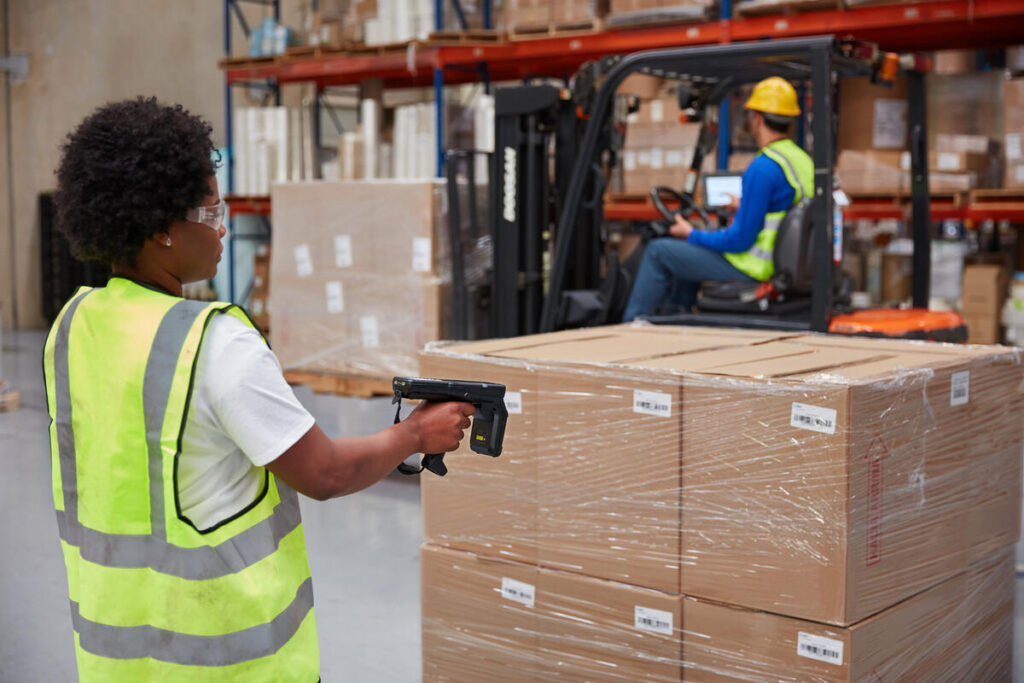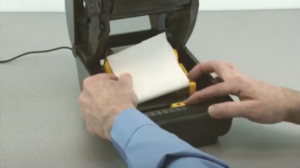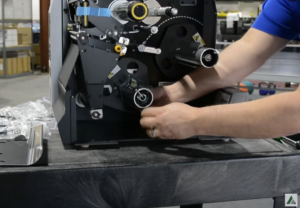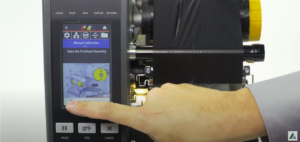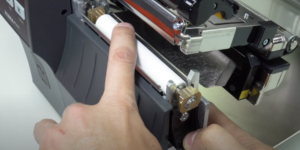Estimated reading time: 3 minutes
Radio frequency identification technology (RFID) uses radio waves to identify people or objects. In its simplest form, there’s a device that reads information either contained on an RFID tag or a wireless device. Captured data later helps workers improve asset and inventory tracking. With RFID, real-time tracking and data capture are enhanced to give workers actionable insights that turn into real-time visibility of supply chain operations. Although many businesses rely on regular barcoding to complete tasks, RFID technology can improve processes and do more. Studies show that when supply chain decision-makers implement RFID technology, they see an 80% improvement in shipping accuracy and a 90% improvement in receiving time. Some key differences when upgrading to RFID from regular data capture are:
- Improved inventory count accuracy up to 99.9%
- An improvement in inventory visibility and availability by almost 20%
- Faster inventory count rates
- Real-time and in-motion tracking of tagged items
- Allows workers to scan multiple tags without a line of sight
Faster and more accurate counts, real-time tracking, and the ability to scan multiple tags make it easier for employees to do their jobs effectively. Reduced interruptions and improved visibility cut down on worker frustration and improve asset awareness in your workforce.
How RFID Improves Performance in the Distribution Process.
A small team with mobile RFID readers can count inventory much quicker than traditional barcode data capture. Since RFID scanning is faster, you can count more frequently and more accurately to increase worker efficiency. Building off the benefits of traditional barcoding, RFID scanning can…
- Accelerate accurate order fulfillment – RFID technology can expand the read range of tags and instantly capture items to boost fulfillment. RFID devices can read almost 100 tags instantly and secure data to improve inventory count rates from 200 to 12,000 items per hour. Customize your RFID tags specifically for your enterprise needs.
- Simplify traceability for future audits – Since RFID can scan multiple items at once, it can beneficial for asset verification to improve traceability. RFID can keep track of each asset when it gets reassigned or relocated so your workers have an accurate location of virtually every asset. RFID tags assist in asset maintenance, compliance, and audits to streamline processes.
- Connect your workers – Equipped with constant signals and the latest wireless connectivity features, RFID technology delivers dependable WiFi connections and BlueTooth capabilities for smoother communication within your teams.
RFID technology simplifies asset identification to improve inventory accuracy, improve visibility, and deliver faster cycle counts. As your trusted RFID specialist, Advanced Automation delivers superior inventory control and compliance with solutions that meet your demands.
Contact our RFID experts to assess your workflows and find the best solution for your business.
To learn more about Advanced Automation and the many services we offer >> Click Here

